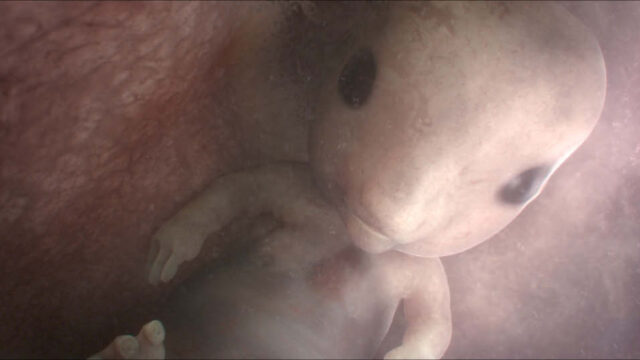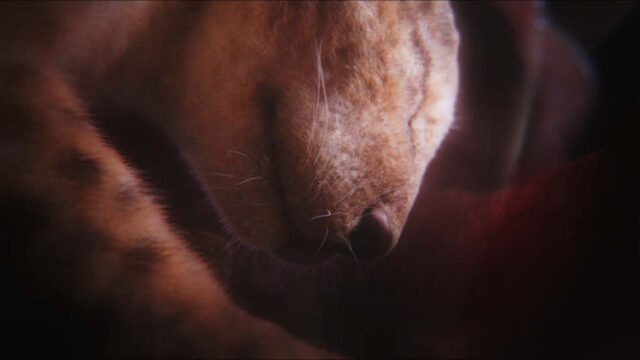For National Geographic Wild’s In the Womb: Animal Babies, Pioneer Productions and Framestore used cutting-edge imagery to provide an inside look at the pregnancies of four animal mothers – lion Maya, meerkat Swift, herding dog Brumby, and elephant Bisa as “they embark on one of life’s most incredible journeys.”
Facing everything from snakes to cattle hooves, hunger to raging rivers, the mothers triumph over challenges big and small on their way to bringing their babies safely into the world. The series combines the latest scanning technology, with photo-real computer animation, to create “the most realistic picture ever of life inside the womb “– giving an intimate window on the weeks and months of each baby animal’s growth and development.
Executive Producers, Thomas Viner & Peter Collins from Pioneer Productions, explain how the production came together.

From initial conception, we knew this was going to be a difficult and challenging project – to take a classic ’science’ subject and turn it into a natural history ‘drama’. The idea was that we wouldn’t make a show about animal pregnancy – it would be a story told like a drama, a story of survival, not just for four animal mums-to-be, but of their unborn babies. There would, of course, be some pretty ground-breaking new science, but it would be delivered by stealth, rather than front and centre, always in the context of the unfolding story.

Visually, we followed this through to its logical conclusion – what we would see in the womb, would be what we could film if we had a camera in there. Narratively, we had to work out what story we could tell that would connect each of our mums’ experiences in the outside world, with what was happening inside the womb. So, if our meerkat mum was bitten by a snake, we would see what was happening to her unborn kits, at that very moment.

We sent out teams to film four charismatic pregnant animal mothers – dog, elephant, lion and meerkat, in Africa and the US. They were given very specific briefs about behaviours we wanted to capture in order to creative a narrative arc, with cliff-hangers like any drama, that would spread across two episodes. Our dog, ranch-hand Brumby, would be working on the farm right up until birth; elephant Bisa was the new leader of a herd of mischievous youngsters; Maya, the lion, faced the challenge of finding enough food, not just for herself, but her unborn cubs too; and Swift, meerkat matriarch of the Whiskers Clan, was battling against the hostile Kalahari Desert that threated both her and her unborn kits.

At the same time, we started the complex process of creating photo-real CGI of what happens inside the womb throughout each animals’ gestation – the most realistic and scientifically accurate imagery ever created. We started by bringing on board our academic consultant, Prof. Thomas Hildebrandt, the world’s leading expert on animal pregnancy. He carried out new bespoke scans of pregnant animals, which would inform the CGI, to break new ground scientifically, as well as visually.
For Framestore, the graphics house behind Harry Potter and Paddington, the process was a baptism of fire – not from the technical aspect of making great visuals, but from the scientific requirements of total accuracy. From the lion ‘hammock’ (a sac which cocoons the cubs) to the precise shade of dark ’sunglasses’ around a baby meerkat’s eyes, everything is exactly what it would look like in a real animal womb.

By this stage, we were deep in the edit – again challenging because four of our key characters, the babies, were just animatics, and would be for a long time. A key narrative element we wanted to crack was seamlessly linking action in the outside world, with action unfolding inside the womb. To do this, Framestore made all the shots in the womb look like they were shot with a real camera (camera wobbles, drops in focus). Tonally, we wanted a sense of one woman sharing the story with another – and surprisingly we found that, as long as it was sufficiently interesting, this enabled us to get more scientific facts in.

Three years in the making, In the Womb feels like we’ve tapped into a new form of natural history story-telling. The CGI isn’t simply explanatory, it’s part of the dramatic narrative arc, taking us places you could never normally see and creating animal characters from scratch, which an audience becomes emotionally invested in. Ultimately, it’s a compelling story of four very special animal mums, bringing new life into the world, against all the odds.
In the Womb: Animal Babies airs on Monday 19th December and Monday 26th December at 9pm, on National Geographic Wild.
Jon Creamer
Share this story


















